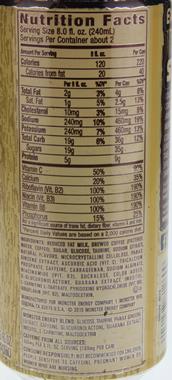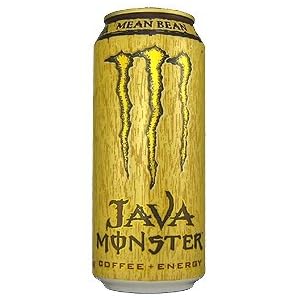

While the American Beverage Association (ABA) recommends energy drinks be labeled as conventional foods and beverages, not as dietary supplements, not all products follow those guidelines. And possibly the most easily recognized slogan, "gives you wiiings." Some lesser-known brands even claim to "burn body fat." Such tag lines are incredibly appealing, especially to young consumers. Past and present energy drinks are associated with provocative slogans: "Drink it in seconds, feel it in minutes, lasts for hours." "Drinks like a soda, kicks like an energy drink." One deemed itself "the legal alternative" to illegal narcotics.

In reality, energy drinks are unpredictable you will likely feel good for a brief period of time, then you'll crash." They're promoted as a way to boost energy, decrease fatigue, and enhance concentration.3 The biggest misconception about energy drinks, says Kelly Pritchett, PhD, RDN, CSSD, an assistant professor of health science at Central Washington University and national media spokesperson for the Academy of Nutrition and Dietetics, is that "they will keep you energized throughout the day or give you a boost. These drinks generally are sold in cans or bottles in grocery stores, vending machines, convenience stores, and bars, and other places where alcohol is sold. Today there are more than 500 energy drinks on the market, and consumption is on the rise.1 The global energy drink market is forecast to exceed $61 billion by the year 2021.2 Energy drinks were introduced to the United States in 1997.
#TAURINE IN MONSTER MEAN BEAN DRINK PLUS#
SOURCE: bit.ly/1f4U4k9 Journal of the American Heart Association, online April 26, 2017.Consumer demand for these beverages is huge, but their safety continues to be questionable.Įnergy drinks, not to be confused with sports drinks, are defined as beverages that typically contain large amounts of caffeine, added sugars, and legal stimulants, such as guarana, taurine, and L-carnitine, plus any number of vitamins, minerals, and herbs, which together can increase alertness, attention, and energy, while also raising blood pressure, heart rate, and breathing. “As a result, emergency room visits by young people in connection with energy drinks are rising.”Īny research that compares the effects of consuming energy drinks versus caffeine alone provides important evidence for public health advocates who have urged the energy drink companies to stop targeting youth with these potentially harmful products, Harris added. “On top of that, energy drinks are highly marketed to adolescent boys in ways that encourage risky behavior, including rapid and excessive consumption,” she said. Some of these ingredients (including taurine and guarana) have not been FDA-approved as safe in the food supply, and few studies have tested the effects of caffeine consumption together with these ‘novelty’ ingredients,” she said by email. “However, energy drinks also contain a proprietary ‘energy blend,’ which typically consists of stimulants and other additives. Harris from University of Connecticut’s Rudd Center for Food Policy and Obesity in Storrs, who wasn’t involved in the study. “The energy drink industry claims that their products are safe because they have no more caffeine than a premium coffee house coffee,” said Dr. Shah of David Grant Medical Center on Travis Air Force Base and University of the Pacific in Stockton, California, and colleagues measured the participants’ blood pressure and used an electrocardiogram (often called an ECG or EKG) to measure heart electrical activity for 24 hours after the subjects consumed the drinks.Īn ECG change known as QTc prolongation and sometimes associated with life-threatening irregularities in the heartbeat was seen after drinking the energy drink, but not after drinking the caffeine beverage, the study team reports.


To see what effects these other components have, researchers compared physical changes in a group of 18 healthy men and women after consuming a commercially available energy drink and after drinking another concoction with the same amount of caffeine but none of the other ingredients.īesides 320 mg of caffeine - the amount in about four cups of coffee - the energy drink contained 4 ounces of sugar, several B vitamins and a proprietary “energy blend” of taurine and other ingredients that are often found drinks like Monster Energy, Red Bull and 5-Hour Energy.


 0 kommentar(er)
0 kommentar(er)
